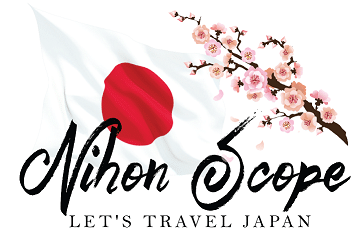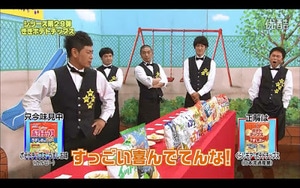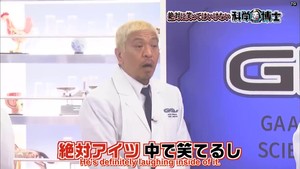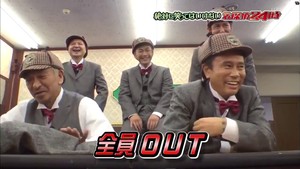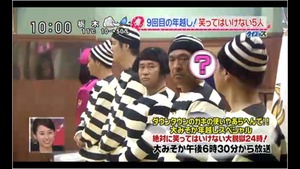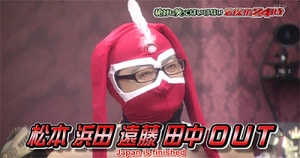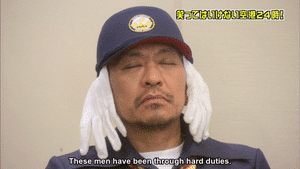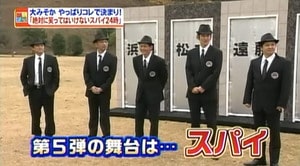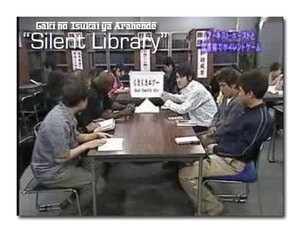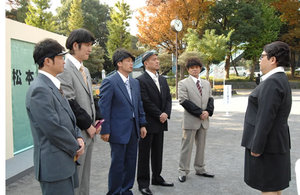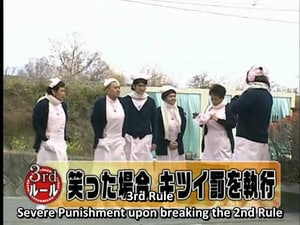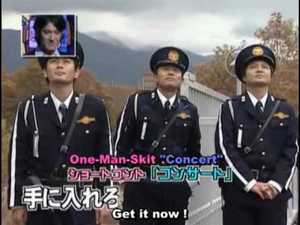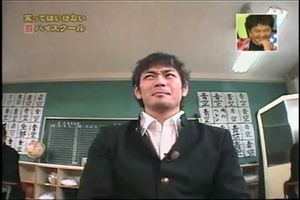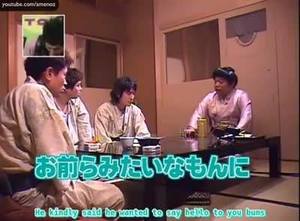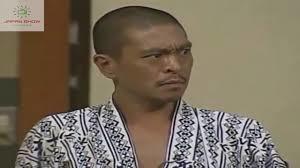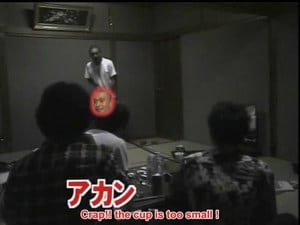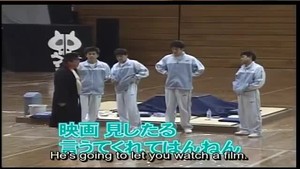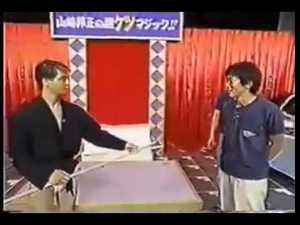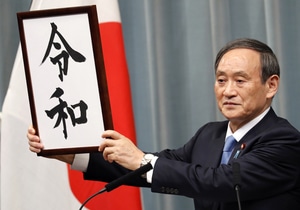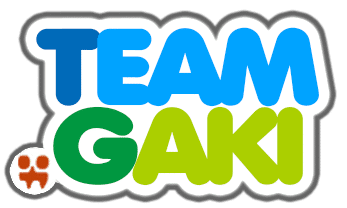 Online Archive of
Online Archive of
Downtown no Gaki no Tsukai
I’m such a huge fan of Team Gaki and there off shoot shows they’ve done I’m placing everything in here that I find. Things change quickly and a lot of the material gets moved and sadly deleted. Some in the past have done 24 hour streaming of all their New Years events and other shows they’ve done in the past. I was fortunate enough to have watched one of these shows in real time in Japan while I was living and going to school there.
So this is here to show my support for one of the craziest game shows I’ve ever seen. When I first saw I thought it was ridiculous and hated it. 5 minutes later it was my favorite thing in the world. That’s Japanese comedy for you.
Enjoy and if you have any sources to share please comment below or share it in the Facebook page.
-Nihon Scope
PS: I will get everything I can find, somethings are not complete or not subtitled.
ONLINE ARCHIVE:
Kiki Series (1998 to 2008):
This is a series of competitions where each member tastes a randomly selected product, mostly food and drink but once cigarettes, from many different brands blindfolded. After the tasting period, they must find the product they tasted. Anyone who selects correctly will receive a prize money, usually 100,000 yen, otherwise they take a variety of punishments, such as being hit in the groin by a Chinko Machine or getting slapped by a foreigner.
(ENG SUB) KIKI SERIES 01 Canned Coffee
(ENG SUB) KIKI SERIES 02 Tea
(ENG SUB) KIKI SERIES 03 Tobacco
(ENG SUB) KIKI SERIES 04 Beer Part 1, Part 2
(ENG SUB) KIKI SERIES 05 Yakisoba Part 1, Part 2
(ENG SUB) KIKI SERIES 06 Bread
(ENG SUB) KIKI SERIES 07 Toothpaste
(ENG SUB) KIKI SERIES 08 Steam Bun Part 1, Part 2
(ENG SUB) KIKI SERIES 09 Pudding
(ENG SUB) KIKI SERIES 10 Instant Rice
(ENG SUB) KIKI SERIES 11 Yogurt
(ENG SUB) KIKI SERIES 12 Chocolate
(ENG SUB) KIKI SERIES 13 Orange Juice Part 1, Part 2
(ENG SUB) KIKI SERIES 14 Instant Miso Part 1, Part 2
(ENG SUB) KIKI SERIES 15 Lemon Tea Part 1, Part 2
(ENG SUB) KIKI SERIES 16 Yakiniku Part 1, Part 2
(ENG SUB) KIKI SERIES 17 Mayonnaise Part 1, Part 2
(ENG SUB) KIKI SERIES 18 Oolong Tea Part 1, Part 2
(ENG SUB) KIKI SERIES 19 Milk
(ENG SUB) KIKI SERIES 20 – Ponzu
(ENG SUB) KIKI SERIES 21 – Tonkatsu Sauce
(ENG SUB) KIKI SERIES 22 – Natto
You can grab a huge DVD series of Gaki no Tsukai here.
Gaki No Tsukai – Science Lab (2017):
All Gaki No Tsukai fans, its the time of the year again. For this years Batsu Game The Gaki no Tsukai cast participated in the 10th annual punishment game (the 10th new years show in the No Laughing Series) in a Science Lab.
(ENG SUB) Gaki No Tsukai – Science Lab 2017
(ENG SUB) Gaki No Tsukai – Science Lab 2 2017
Batsu Game No-Laughing Detective Agency (2016):
The Gaki no Tsukai cast participated in the 9th annual punishment game (the 10th new years show in the No Laughing Series). Unlike previous Batsu Game, this series is the first to include special guest named Masahiro Nakai of Japanese boy band SMAP participating in the first few hours of No laughing rule. This series also sets the new record for the slaps received by Hitoshi Matsumoto. Credits goes to TeamGaki, who subbed the whole Batsu Game.
(ENG SUB) Gaki No Tsukai Detective 1
(ENG SUB) Gaki No Tsukai Detective 2
(ENG SUB) Gaki No Tsukai Detective 3 (not active)
(ENG SUB) Gaki No Tsukai Detective 4
(ENG SUB) Gaki No Tsukai Detective 5
(ENG SUB) Gaki No Tsukai Detective 6
(ENG SUB) Gaki No Tsukai Detective 7
(ENG SUB) Gaki No Tsukai Detective 8
(ENG SUB) Gaki No Tsukai Detective 9
(ENG SUB) Gaki No Tsukai Detective 10
BATSU GAME NO LAUGHING PRISON (2015)
(ENG SUB) Gaki No Tsukai Prison 1
(ENG SUB) Gaki No Tsukai Prison 2
(ENG SUB) Gaki No Tsukai Prison 3
(ENG SUB) Gaki No Tsukai Prison 4
(ENG SUB) Gaki No Tsukai Prison 5
(ENG SUB) Gaki No Tsukai Prison 6
(ENG SUB) Gaki No Tsukai Prison 7
(ENG SUB) Gaki No Tsukai Prison 8
NO Laughing Defense Force (2014)
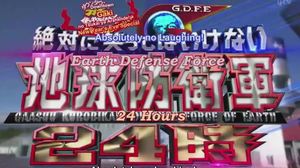
(ENG SUB) No Laughing Defence Force Part 1
(ENG SUB) No Laughing Defence Force Part 2
(ENG SUB) No Laughing Defence Force Part 3
(ENG SUB) No Laughing Defence Force Part 4
(ENG SUB) No Laughing Defence Force Part 5
(ENG SUB) No Laughing Defence Force Part 6
(ENG SUB) No Laughing Defence Force Part 7
(ENG SUB) No Laughing Defence Force Part 8
(ENG SUB) No Laughing Defence Force Part 9
(ENG SUB) No Laughing Defence Force Part 10
GAKI NO TSUKAI POWER RANGERS (2012)
Five Rangers GameIn this challenge, all five cast members enter separate dressing rooms and each randomly dress as one of the five colors of Gorenjai, and they attempt to complete all five different colors in 6 hours. The chance that the five cast members choose all different colors is 120/3125 (3.84%). The challenge is based on the main running gag of the Gorenjai sketches: that the team members couldn’t decide who wore which colors.
(ENG SUB) 5 Rangers EP 1 (Not available)
(ENG SUB) 5 Rangers EP 2
(ENG SUB) 5 Rangers EP 3
(ENG SUB) 5 Rangers EP 4
(ENG SUB) 5 Rangers EP 5
(ENG SUB) 5 Rangers EP 6
(ENG SUB) 5 Rangers EP 7
(ENG SUB) 5 Rangers EP 8
(ENG SUB) 5 Rangers EP 9
(ENG SUB) 5 Rangers EP 10
(ENG SUB) 5 Rangers EP 11
(ENG SUB) 5 Rangers EP 12
(ENG SUB) 5 Rangers EP 13
(ENG SUB) Gaki No Tsukai Airport Part 1
(ENG SUB) Gaki No Tsukai Airport Part 2
(ENG SUB) Gaki No Tsukai Airport Part 3
(ENG SUB) Gaki No Tsukai Airport Part 4
(ENG SUB) Gaki No Tsukai Airport Part 5
(ENG SUB) Gaki No Tsukai Airport Part 6
(ENG SUB) Gaki No Tsukai Airport Part 7
(ENG SUB) Gaki No Tsukai Airport Part 8
(ENG SUB) Gaki No Tsukai Airport Part 9
(ENG SUB) Gaki No Tsukai Airport Part 10
(ENG SUB) Gaki No Tsukai Spy Part 1
(ENG SUB) Gaki No Tsukai Spy Part 2
(ENG SUB) Gaki No Tsukai Spy Part 3
(ENG SUB) Gaki No Tsukai Spy Part 4
(ENG SUB) Gaki No Tsukai Spy Part 5
(ENG SUB) Gaki No Tsukai Spy Part 6
No-Laughing Hotel Employee (2009)
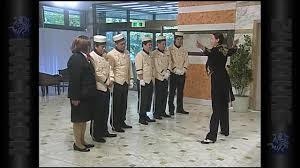
For the third consecutive time, Yamazaki, Downtown, and Coq au Rico took part in the annual punishment game. The setting was a hotel and it aired on New Year’s Eve at 6:30pm until 12:30am on New Year’s Day. Numerous cameo and guest appearances were made, including Masahiro Chono, Masahiro Tanaka, Natsumi Ogawa ( Hamada’s wife ), Endō’s ex-wife Chiaki, Jyunji Endō ( Endō’s younger brother), Masako Mori, Ayumi Nakamura, Monta Yoshinori, and Yoshimi Iwasaki.
(ENG SUB) Gaki No Tsukai Hotel Employee Part 1
(ENG SUB) Gaki No Tsukai Hotel Employee Part 2
(ENG SUB) Gaki No Tsukai Hotel Employee Part 3
(ENG SUB) Gaki No Tsukai Hotel Employee Part 4
(ENG SUB) Gaki No Tsukai Hotel Employee Part 5
(ENG SUB) Gaki No Tsukai Hotel Employee Part 6
(ENG SUB) Gaki No Tsukai Hotel Employee Part 7
(ENG SUB) Gaki No Tsukai Hotel Employee Part 8
GAKI NO TSUKAI SILENT LIBRARY (2009)
In Silent Library, the cast and a sixth member, usually Heipo, are in a staged library in which one of them has to undergo a punishment upon choosing the card with the skull and crossbones on it (similar to Russian roulette). Although the game requires that they remain silent during the entire segment, the members repeatedly let out bursts of muffled laughter that is loud enough for the occupants of the library to hear. An example of punishments are being “Outwitted” (having a nose hair pulled from the nostril), “Nose Fishing” (a metal clamp attached to the inside of both nostrils being pulled), and “Hot Earmuffs” (boiled earmuffs put on both ears). Former K-1 champion Ernesto Hoost once made a special appearance, as well as writer and film director Koki Mitani.This segment was adapted into an American game show, called Silent Library. The international version of the show is referred to as Fist of Zen. It debuted on MTV on June 15, 2009.
(ENG SUB) Gaki No Tsukai Silent Library Part 1
(ENG SUB) Gaki No Tsukai Silent Library Part 2
No-Laughing Newspaper Agency (2008)
For the second time around, all five members of the regular cast took part in the annual punishment game. This year the chosen setting was a newspaper agency. The members had to go to a number of mock press conferences dressed as journalists. Endo’s ex-wife Chiaki made a guest appearance in a conference about her “new husband.” In keeping with the theme of the punishment game, giant latex pencils were used to strike anyone who had been declared OUT.
(ENG SUB) Gaki No Tsukai Newspaper Agency Part 1
(ENG SUB) Gaki No Tsukai Newspaper Agency Part 2
(ENG SUB) Gaki No Tsukai Newspaper Agency Part 3
(ENG SUB) Gaki No Tsukai Newspaper Agency Part 4
(ENG SUB) Gaki No Tsukai Newspaper Agency Part 5
No-Laughing Hospital (2007)
For this special, Downtown, Yamasaki, and Coq au Rico all took part of the most infamous punishment game — and they were forced to cross-dress as nurses for this one. Yamasaki, who had just completed a hospital stay after being treated for enteritis, was permitted to take some absences during the game. Among the famous guests who performed here were Sonny Chiba, Masahiro Chono and many other comedy duos in Japan. As a side note, it was during this game that the record at the time for most punishment-strikes ever inflicted was set, with Hitoshi Matsumoto having received a total of 259 of them.
(ENG SUB) Gaki No Tsukai Hospital Part 1
(ENG SUB) Gaki No Tsukai Hospital Part 2
(ENG SUB) Gaki No Tsukai Hospital Part 3
(ENG SUB) Gaki No Tsukai Hospital Part 4
(ENG SUB) Gaki No Tsukai Hospital Part 5
(ENG SUB) Gaki No Tsukai Hospital Part 6
No-Laughing Police Station (2006)
This batsu game premiered as a three-hour special. The losing players were Yamasaki, Hamada, and Endō, who lost at a Russian Roulette style game using large tubs suspended from the studio ceiling, and cutting loose the one’s that fell, thus earning them a spot in the Batsu Game. Matsumoto and Tanaka avoided the batsu, and later appeared in the game, visiting the three punished players. The hang-men were especially rough when giving discipline to offenders.
(ENG SUB) Gaki No Tsukai Police Station Part 1
(ENG SUB) Gaki No Tsukai Police Station Part 2
(ENG SUB) Gaki No Tsukai Police Station Part 3
(ENG SUB) Gaki No Tsukai Police Station Part 4
(ENG SUB) Gaki No Tsukai Police Station Part 5
(ENG SUB) Gaki No Tsukai Police Station Part 6
No-Laughing High School (2005)
Matsumoto, Yamasaki, Endō, and Tanaka are punished after losing another Russian Roulette style game where they shocked themselves. This time, they are sent to ‘high school’ for one day. The punishment weapon for this game is the shinai, and Hamada participated as one of the hang-men. It was revealed that this game was shot during Matsumoto’s birthday.
(ENG SUB) Gaki No Tsukai High School Part 1
(ENG SUB) Gaki No Tsukai High School Part 2
(ENG SUB) Gaki No Tsukai High School Part 3
(ENG SUB) Gaki No Tsukai High School Part 4
No Laughing in Yugawara (2004)
In a Russian Roulette style game involving sushi, Yamasaki, Tanaka, and Hamada lost and were punished in the second spa-themed no-laughing batsu game, filmed at Yugawara, Kanagawa. A riding crop was the punishment device employed. Matsumoto and Endo joined the game half-way as “The Mad Brothers.” This batsu game features Endō’s luchador character Dynamite Shikoku.
(ENG SUB) Gaki No Tsukai Yugawara Part 1
(ENG SUB) Gaki No Tsukai Yugawara Part 2
(ENG SUB) Gaki No Tsukai Yugawara Part 3
(ENG SUB) Gaki No Tsukai Yugawara Part 4
No-Laughing Hot Spring Inn (2003)
The first No-Laughing Batsu Game, shot in Yamanashi, it served as the punishment for Matsumoto, Yamasaki, Endō, and Tanaka, for losing to Hamada in a 4 vs. 1 bowling match (which aired on May 18, 2003). Getting caught laughing during this game resulted in having a dart from a blow-gun shot into the buttocks. Given the newness of the concept, this punishment game was carried out in a somewhat “primitive” way: the Watchers were more lenient with enforcing the rule, and the auto sound blared rough over the sound-system that was set up through the facility.
(ENG SUB) Gaki No Tsukai Onsen Part 1
(ENG SUB) Gaki No Tsukai Onsen Part 2
(ENG SUB) Gaki No Tsukai Onsen Part 3
Matsumoto Haunted Hotel (2001)
After Matsumoto loses a swimming match (match aired on Feb. 11, 2001) against the other four cast members, a batsu game is set at a “haunted ryokan”, where Matsumoto must remain overnight. He endures ghost apparitions, a seemingly empty samurai suit that comes alive, and random knocks on walls, among other things. The other four cast members attend to support him in controlling his fear, but end up scaring him as well.
(ENG SUB) Matsumoto Haunted Hotel Part 1
(ENG SUB) Matsumoto Haunted Hotel Part 2
(ENG SUB) Matsumoto Haunted Hotel Part 3
(ENG SUB) Matsumoto Haunted Hotel Part 4
24-Hour Tag / Onigokko (2000)
A batsu game that took place over the period of 24 hours where all the cast, except Matsumoto, are locked in a sports arena, playing “tag” with various Oni (demons) (who, here,—except for two or three instances {that were on film},—were men dressed in full-body black suits) that were “summoned” to attack at random moments, each with a specific type of punishment written on the suit to be inflicted whenever the victims were tagged. This batsu game is the result of Matsumoto winning the race against the four others in “Gaki no tsukai – 4 tai 1 100m sou Taiketsu!” (on Oct.17, 1999)
(ENG SUB) 24 Hour Endurance Tag Part 1
(ENG SUB) 24 Hour Endurance Tag Part 2
Yamazaki Ass Magic
